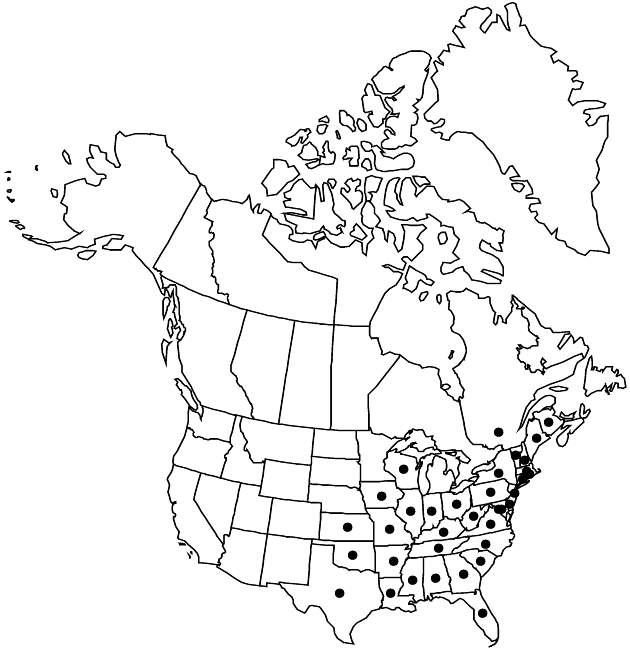Ionactis linariifolia
Pittonia 3: 245. 1897.
Plants 10–50 (–70) cm (commonly cespitose; rhizomes compact, crownlike, woody, fibrous-rooted). Stems proximally herbaceous or slightly woody, eglandular. Leaves separated by evident internodes; blades uniform, linear to narrowly oblong or oblanceolate, 12–40 mm, margins green, faces glabrous, eglandular. Heads usually in loose, corymbiform arrays, sometimes borne singly. Involucres 6–9 mm. Disc-florets bisexual, fertile; corollas (4.5–) 5–7 mm. Cypselae (2.5–) 3.5–4 mm, eglandular. 2n = 18.
Phenology: Flowering (Jun–)Sep–Nov.
Habitat: Sandy habitats, often seeps or other moist sites, commonly in longleaf pine communities along Gulf Coast, or inland sites of rocky hills, ridges, bluffs, sometimes in clay, in oak pine woods, sandy cracks and ledges of acid rocks in stream falls or rapids, open jackpine stands on sand
Elevation: 5–800(–900) m
Distribution

N.B., Que., Ala., Ark., Conn., Del., D.C., Fla., Ga., Ill., Ind., Iowa, Kans., Ky., La., Maine, Md., Mass., Miss., Mo., N.H., N.J., N.Y., N.C., Ohio, Okla., Pa., R.I., S.C., Tenn., Tex., Vt., Va., W.Va., Wis.
Discussion
Ionactis linariifolia was noted by M. L. Fernald (1950) to occur in “s. Minn.”; G. B. Ownbey and T. Morley (1991) did not include it for Minnesota.
Selected References
None.
Lower Taxa
"[" is not declared as a valid unit of measurement for this property."]" is not declared as a valid unit of measurement for this property.